Lonnie Pacelli's Blog
October 9, 2025
Career Sustainability: 3 Essential Pillars
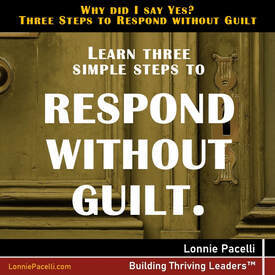 Some time back I wrote about 4 Ways Your PM Career Sustainability Can Go Wrong. In the article, I introduce the concept of career sustainability and the importance of running as if you were in a marathon versus a sprint. The article focused on four fictional but realistic characters:The Staunch Waterfall Advocate (Stan)The 24/7 PM (Trish)The CEO (Jerry)The Shrewd Salesperson (Alex)
Some time back I wrote about 4 Ways Your PM Career Sustainability Can Go Wrong. In the article, I introduce the concept of career sustainability and the importance of running as if you were in a marathon versus a sprint. The article focused on four fictional but realistic characters:The Staunch Waterfall Advocate (Stan)The 24/7 PM (Trish)The CEO (Jerry)The Shrewd Salesperson (Alex) Each of the characters had some successes, but also had some blind spots that impacted their sustainability in their respective jobs:Stan with sustainable skillsTrish with sustainable lifestyleJerry with sustainable relationshipsAlex with sustainable stewardship
I’m a strong advocate of career sustainability. I believe that skills, lifestyle, relationships, and stewardship are key drivers to help you as a professional be more consistently effective and content in your work and play lives. To that end, what follows is a four-part series focused on each driver:Sustainable SkillsSustainable LifestyleSustainable RelationshipsSustainable Stewardship
Let’s kick things off with the first driver.
Read more at ProjectManagement.com.
Published on October 09, 2025 02:29
October 4, 2025
The Very Real Consequences of Evasive Answers
 Some time back I was in a meeting with a project manager who presented the status on his troubled project to the project sponsor and other executive stakeholders. This project was of high interest to the sponsor and stakeholders as they were depending on its successful completion to make some major changes in their respective organizations. The project sponsor asked the project manager a very straightforward question:
Some time back I was in a meeting with a project manager who presented the status on his troubled project to the project sponsor and other executive stakeholders. This project was of high interest to the sponsor and stakeholders as they were depending on its successful completion to make some major changes in their respective organizations. The project sponsor asked the project manager a very straightforward question:Why is the project slipping?
The project manager went into a long, meandering monologue. The sponsor interrupted and asked the question again. More meandering from the project manager. Seeing the sponsor and other stakeholders’ growing frustration, the project manager’s boss stepped in and said they needed to do more homework and would come back the next day better prepared. The next day, the project manager’s boss presented the status and answered questions--along with a new project manager.
Through my career I’ve seen (and been in) plenty of situations where an exec’s (who I will refer to as “the asker”) questions were met with evasive responses. It could be that the person being asked (“the askee”) didn’t want to admit not knowing something or be proven wrong. The askee would then, as we liked to say in the consulting world, “tap dance” to attempt any response that might satisfy the asker. More often than not, the asker would grow frustrated with the evasiveness. This led me to the following hypothesis:
If an asker asks a question, the asker expects a direct answer.
When an askee is evasive, the askee leaves it to the asker to make up his/her own answer.
The askee has not only damaged his/her credibility, but now has to change the asker’s perception of the answer.
While my focus is in executive interaction, the same principle applies to other relationships like spouses or business partners. When an askee is evasive, the asker makes up his/her own answer, and the askee now has to dig out of a hole to reestablish credibility and set the record straight.
Need to build your answering skills? Keep the following eight tips in mind:Listen first then answer – Take the time to listen to a question without interrupting the asker, then when the asker is finished, give a response. Resist the urge to interrupt to get your answer in.Do ensure clarity – If you truly don’t understand a question, then by all means ask for clarification. But don’t continually ask for clarity; it could look like you’re deflecting.Give straight answers – If you’re asked a direct yes/no question, give a yes/no response. If there are contextual factors that support the answer or conditions that may change the answer, then provide them--concisely. And please don’t say, “It depends” without qualification.Don’t reframe – Saying something like “The question you should be asking is . . .” immediately conveys that you think the asker isn’t intelligent enough to ask the right questions. Acknowledge the question, respond, and move on.Don’t deflect – Changing the topic to avoid answering a question may work if the asker can be distracted, but usually the asker can sniff out when someone is avoiding a question by changing the topic. Do it once and you’ll probably get some grace for innocently not understanding the question; do it two or more times and you’ll be viewed as an avoider.Don’t attack validity – Saying something like, “That’s not important,” or “You shouldn’t ask that,” tells the asker you believe his or her intelligence is inferior to yours. If the asker is taking the time to ask a question, then assume the question is important to him/her.Say “I don’t know” – If you don’t know the answer to a question then be quick to say “I don’t know, I need to get back to you.” Then record the question and be prepared for a “When will you know?” follow-up from the asker.Be quick to admit if you’re not prepared – Too many “I don’t knows” may mean you have to do more research. It’s best to avoid this by being clear on the topic and prepared to discuss it. One humiliating abrupt ending to a meeting with a “you need to do more homework” directive will motivate you to not let it happen again.
This bears repeating: the consequences of evasive answers not only means the asker makes up his/her own answer, it also harms the askee’s credibility. Give straight answers and control the narrative.
Published on October 04, 2025 02:25
September 27, 2025
Free 9/30-10-1: Don't Throw in the Towel, Throw Down the Gauntlet!
 Free 9/30-10/1: Don't Throw in the Towel, Throw Down the Gauntlet!
Free 9/30-10/1: Don't Throw in the Towel, Throw Down the Gauntlet!Get it at https://amzn.to/2DuT7SC
#freebook #leadership #kindle #kindlefire #ebooks #ebook #Kindlefreebooks #Kindledeals #FREE #mustread #goodreads #greatreads #freebie #freebies #kindlebook #ad #teamwork
Published on September 27, 2025 02:37
7 Questions to Ask When Preparing a Solution for Deployment
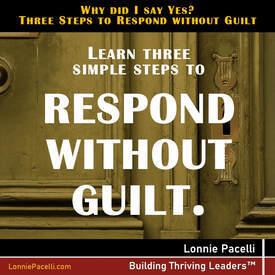 In this series I am outlining 42 questions that a product manager should ensure are answered across the following SDLC phases:
Product Strategy
– The reason a product exists, and its intended goals.
Product Roadmapping
– The broad timeline in which future product capabilities are slated for release.
Initiative Planning
– The definition of a project to deliver capabilities within a budget and schedule timeline.
Solution Design
– The people, process, systems and policy designs required to deliver the required capabilities.
Solution Development
– The people, process, systems, and policy capabilities have been developed and are ready for testing, training, and deployment planning.Solution Readiness – All solution aspects are accepted and ready to be deployed.In the prior article I focused on seven product manager’s accountabilities when developing a solution. This article focuses on seven questions to be asked when preparing a solution for deployment.
In this series I am outlining 42 questions that a product manager should ensure are answered across the following SDLC phases:
Product Strategy
– The reason a product exists, and its intended goals.
Product Roadmapping
– The broad timeline in which future product capabilities are slated for release.
Initiative Planning
– The definition of a project to deliver capabilities within a budget and schedule timeline.
Solution Design
– The people, process, systems and policy designs required to deliver the required capabilities.
Solution Development
– The people, process, systems, and policy capabilities have been developed and are ready for testing, training, and deployment planning.Solution Readiness – All solution aspects are accepted and ready to be deployed.In the prior article I focused on seven product manager’s accountabilities when developing a solution. This article focuses on seven questions to be asked when preparing a solution for deployment.Read more at ProjectManagement.com.
Published on September 27, 2025 02:37
September 22, 2025
7 Questions to Ask When Developing a Solution
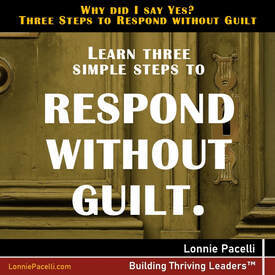 In this article series, I am outlining 42 questions that a product manager should ensure are answered across the following SDLC phases:
Product Strategy
– The reason a product exists, and its intended goals.
Product Roadmapping
– The broad timeline in which future product capabilities are slated for release.
Initiative Planning
– The definition of a project to deliver capabilities within a budget and schedule timeline.
Solution Design
– The people, process, systems and policy designs required to deliver the required capabilities.Solution Development – The people, process, systems, and policy capabilities have been developed and are ready for testing, training, and deployment planning.Solution Readiness – All solution aspects are accepted and ready to be deployed.
In this article series, I am outlining 42 questions that a product manager should ensure are answered across the following SDLC phases:
Product Strategy
– The reason a product exists, and its intended goals.
Product Roadmapping
– The broad timeline in which future product capabilities are slated for release.
Initiative Planning
– The definition of a project to deliver capabilities within a budget and schedule timeline.
Solution Design
– The people, process, systems and policy designs required to deliver the required capabilities.Solution Development – The people, process, systems, and policy capabilities have been developed and are ready for testing, training, and deployment planning.Solution Readiness – All solution aspects are accepted and ready to be deployed.In the previous article, I focused on seven product manager’s accountabilities when designing a solution. This article focuses on seven questions to be asked when developing a solution.
Read more at ProjectManagement.com.
Published on September 22, 2025 00:00
August 29, 2025
Free 9/2-3: Crush Those Risks and Issues!
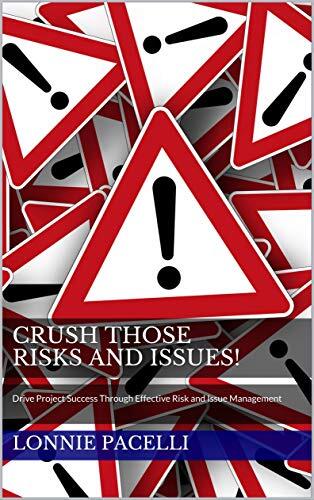 Free 9/2-3: Crush Those Risks and Issues!
Free 9/2-3: Crush Those Risks and Issues!Get it at https://amzn.to/2S2E073
#freebook #leadership #kindle #kindlefire #ebooks #ebook #Kindlefreebooks #Kindledeals #FREE #mustread #goodreads #greatreads #freebie #freebies #kindlebook #ad #teamwork #projectmanagement
Published on August 29, 2025 02:30
What Two Decades of Working from Home Taught Me
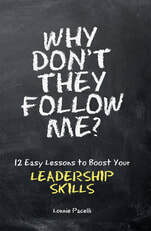 In 2004, my wife Patty and I decided to team homeschool our autistic son because we knew he would need more help as he entered middle school. I had spent 20 years in corporate America, working for both Accenture and Microsoft, but in the Fall of 2004, I became his part-time math and science teacher, spending the remainder of my time doing business consulting and writing books.
In 2004, my wife Patty and I decided to team homeschool our autistic son because we knew he would need more help as he entered middle school. I had spent 20 years in corporate America, working for both Accenture and Microsoft, but in the Fall of 2004, I became his part-time math and science teacher, spending the remainder of my time doing business consulting and writing books.Up to that time I always had either a client or office to go to. With the change to homeschool teacher/author/consultant, I now had no place to go each day. My office was either our playroom where we homeschooled, our home office, or local coffee shops. It was definitely an adjustment and I learned a lot about how to be effective without going to a workplace. Now I can’t imagine it any other way.In 2020, millions of people were quickly forced into working from home. When I started working from home sixteen years earlier, I had the benefit of preparing for my new life—a stark difference from those who suddenly found themselves in work-from-home mode with little warning or preparation. Some aspects of 2020 versus 2004 were easier and others harder, for example, the collaboration tools available in 2020 were simply non-existent in 2004. But the bottom line is the changes were massive and required significant adjustments.
In my two decades of not having an office I experienced a lot of bumps and bruises to get into an effective work/life rhythm. Key to my learnings was the need to enforce greater self-discipline about:
what I do,how I manage my time,what and when I eat,how much I sleep,when and how I exercise,how I “turn off work,”and how I interact with others.
It’s those bumps and bruises that I want to help others avoid in shifting to a sustainable work-from-home lifestyle, which I have boiled down into five lessons:
Master the online experience – For Pete’s sake, if Zoom, Microsoft Teams, or other online meeting tools are an integral part of your business, take the time to truly understand them and ensure the hardware you’re using creates the most positive experience for others attending your meetings. Not knowing how to do things like share your screen, give others control to share their screen, or use an electronic whiteboard is akin to meeting a business associate face to face at a coffee shop with blaring music and no chairs or tables. When you fumble with the tools you send a clear message to your recipient that he or she isn’t important enough for you to create an outstanding online experience. Just as important, struggling with online meeting tools conveys that you are slow to adapt to changes.Plan to “Done” not “Do” – Each Monday morning I go through my to-do list and decide what I plan to have done by the end of the week. I then plan time in my calendar throughout the week to work on each to-do, then I schedule a Friday 5 p.m. meeting summarizing what I have committed to getting done that week. Key to this is expressing your to-do list in terms of a deliverable, or “done,” not in terms of an activity, or “do.” If you think only in terms of activity, you’re more likely to measure success in terms of how long you spend doing something versus what you actually got done.Put everything in your calendar – In my article "I Can’t Keep Up!" Six Principles for Using Your Calendar to Get More Done , I talk about how to use your calendar not just as a work thing but as a life thing. This is particularly important when you work from home because work start/stop events like commuting to and from work are no longer there. With those barriers gone, it’s much easier to be less respectful of your own time. I’ve had to learn that working from home doesn’t mean I can work anytime; it means I had to be much more disciplined about when I would and wouldn’t work.Set clear expectations with loved ones – Working from home doesn’t necessarily mean you’re always accessible. Having very clear expectations about when you will and won’t be working is crucial to your overall effectiveness. Patty and I send meeting notices to each other for social gatherings or other meetings where one of us won’t be available to the other. This works very well for us to keep us aligned and ensure we don’t overcommit ourselves.Make physical and mental health a priority – While there are great conveniences in working from home, it also means you have to be more diligent about tending to your physical and mental health. I never stay in pajamas during the day, I schedule exercise time in my calendar, I eat meals away from my workstation, stick to a regular sleep schedule, and *try to* be disciplined about between-meal snacking. I also weigh myself regularly. This really helps if you want to maintain or lower your weight and if you tend to wear stretchy clothes that don’t remind you if you’ve added an inch to your waistline.
For many, working from home may be a long-term if not permanent reality. Consider these five lessons to help you design a sustainable and satisfying work-from-home lifestyle.
Lonnie Pacelli
Keynote Speaker | Board Director | Autism Advocate | Author | Project Management Expert | Microsoft/Accenture Veteran
See his books on Amazon.
Published on August 29, 2025 02:30
August 23, 2025
7 Questions to Ask When Designing a Solution
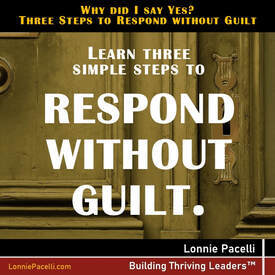 In this series, I am outlining 42 questions that a product manager should ensure are answered across the following SDLC phases:
Product Strategy
– The reason a product exists, and its intended goals.
Product Roadmapping
– The broad timeline in which future product capabilities are slated for release.
Initiative Planning
– The definition of a project to deliver capabilities within a budget and schedule timeline.Solution Design – The people, process, systems and policy designs required to deliver the required capabilities.Solution Development – The people, process, systems, and policy capabilities have been developed and are ready for testing, training, and deployment planning.Solution Readiness – All solution aspects are accepted and ready to be deployed. In the prior article I focused on seven product manager’s accountabilities when planning an initiative. This article focuses on seven questions to be asked when designing a solution.
In this series, I am outlining 42 questions that a product manager should ensure are answered across the following SDLC phases:
Product Strategy
– The reason a product exists, and its intended goals.
Product Roadmapping
– The broad timeline in which future product capabilities are slated for release.
Initiative Planning
– The definition of a project to deliver capabilities within a budget and schedule timeline.Solution Design – The people, process, systems and policy designs required to deliver the required capabilities.Solution Development – The people, process, systems, and policy capabilities have been developed and are ready for testing, training, and deployment planning.Solution Readiness – All solution aspects are accepted and ready to be deployed. In the prior article I focused on seven product manager’s accountabilities when planning an initiative. This article focuses on seven questions to be asked when designing a solution.Read more at ProjectManagement.com.
Published on August 23, 2025 02:33
August 16, 2025
Using the Project Guide to define your project in Microsoft Project
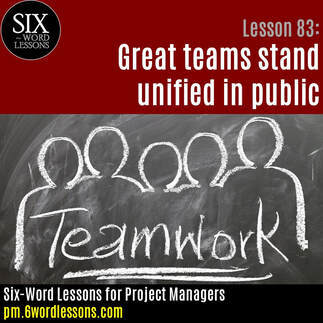 A pretty nifty feature in Microsoft Project is the ability to define a project through the use of the project guide. The project guide is a cool little wizard that walks you through setting up a project, assigning resources to the project, tracking progress, and reporting on progress. What I like about this wizard is not only the help it gives newbie project managers, but also is a great reminder of the cool MS Project capabilities for more seasoned MS Project project managers.
A pretty nifty feature in Microsoft Project is the ability to define a project through the use of the project guide. The project guide is a cool little wizard that walks you through setting up a project, assigning resources to the project, tracking progress, and reporting on progress. What I like about this wizard is not only the help it gives newbie project managers, but also is a great reminder of the cool MS Project capabilities for more seasoned MS Project project managers. To get started with this cool project management software tool do the following: Turn on the Project Guide:
On the Tools menu, click Options, and then click the Interface tab
In the Project Guide Settings, select the Display Project Guide check box
You can also turn on and off in the View menu
Define your project and tasks:
Define the project
Define general working times
List the tasks in the project
Organize tasks into phases
Schedule tasks
Link to or attach more task information
Add columns of custom information
Set deadlines and constrain tasks
Identify risks to the project
Add documents to the project
Publish project information to the Web (if using project server)
Define your resources:
Specify people and equipment for the project
Specify the booking types for resources
Define working times for resources
Assign people and equipment to tasks
Link to or attach more resource information
Add columns of custom information
Publish project information to the web (if using project server)
Track and manage your project:
Save a baseline plan to compare with later versions
Prepare to track the progress of your project
Incorporate progress information into your project
Check the progress of the project
Make changes to the project
See what is driving the start date of the project
Track risks and issues associated with the project (if using project server)
Request text-based status reports (if using project server)
Publish project information to the web (if using project server)
Report status of your project:
Select a view or report
Change the content or order of information in a view
Change the look or content of the Gantt chart
Print current view as a report
See the status of multiple projects in project center (If using project server)
Compare progress against baseline work
See the project's critical tasks
See project risks and issues (if using project server)
See how resources time is allocated
See project costs
Publish project information to the web (if using project server)
Use this cool little project management software tool in MS Project to help ensure you're getting the most of what project management software has to offer!
Lonnie Pacelli
Keynote Speaker | Board Director | Autism Advocate | Author | Project Management Expert | Microsoft/Accenture Veteran
See his books on Amazon.
Published on August 16, 2025 02:26
August 9, 2025
7 Essential Questions to Ask During Initiative Planning
 In this series, I am outlining 42 questions that a product manager should ensure are answered across the following SDLC phases:
Product Strategy
– The reason a product exists, and its intended goals.
Product Roadmapping
– The broad timeline in which future product capabilities are slated for release.Initiative Planning – The definition of a project to deliver capabilities within a budget and schedule timeline.Solution Design – The people, process, systems and policy designs required to deliver the required capabilities.Solution Development – The people, process, systems, and policy capabilities have been developed and are ready for testing, training, and deployment planning.Solution Readiness – All solution aspects are accepted and ready to be deployed. In the prior article, I focused on seven product manager’s accountabilities when developing a product roadmap. This article focuses on seven questions to be asked when defining an initiative:
In this series, I am outlining 42 questions that a product manager should ensure are answered across the following SDLC phases:
Product Strategy
– The reason a product exists, and its intended goals.
Product Roadmapping
– The broad timeline in which future product capabilities are slated for release.Initiative Planning – The definition of a project to deliver capabilities within a budget and schedule timeline.Solution Design – The people, process, systems and policy designs required to deliver the required capabilities.Solution Development – The people, process, systems, and policy capabilities have been developed and are ready for testing, training, and deployment planning.Solution Readiness – All solution aspects are accepted and ready to be deployed. In the prior article, I focused on seven product manager’s accountabilities when developing a product roadmap. This article focuses on seven questions to be asked when defining an initiative:Read more at ProjectManagement.com.
Published on August 09, 2025 02:41



